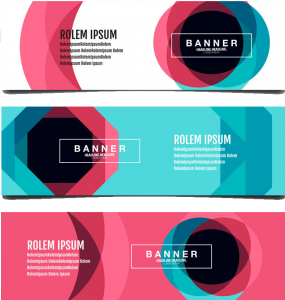As business leaders, you’ve already got a lot on your plate—deadlines, meetings, decisions, and a dozen other things pulling you in different directions. So, how are you supposed to make marketing a priority, especially when managing multiple digital platforms feels like a full-time job on its own? Here’s the truth—it’s absolutely doable. The real hurdle isn’t the workload. It’s getting started.
Cross-platform advertising might sound a little intimidating at first, but once you set it up properly, it starts working for you. Each platform begins to support the other, creating a streamlined system that saves you time and effort. The beauty of cross-platform advertising is that it doesn’t just spread your message wider—it also makes your marketing smarter and more efficient.
The toughest part is taking that first step. But once you’re in, the pieces begin to fall into place—and you’ll wonder why you didn’t start sooner.
Table of Contents
ToggleWhat is a Cross-Platform Advertising Strategy?

In simple terms, a cross-platform advertising strategy is all about creating multiple opportunities for your brand to connect with people—wherever they are online. Instead of relying on just one platform, like Facebook or Google, you’re spreading your message across several digital touchpoints—think Instagram, LinkedIn, email, YouTube, search ads, and more.
This approach is powerful because today’s consumers aren’t sticking to just one app or website. They scroll through Instagram in the morning, catch up on LinkedIn at lunch, and binge YouTube or check their emails in the evening. With cross-platform advertising, you’re not waiting for your audience to come to you—you’re meeting them where they already hang out.
But it’s more than just “being everywhere.” A smart cross-platform strategy ensures your messaging is consistent and tailored to fit the tone and behavior of each platform. That means your brand stays recognizable, but also relevant, whether someone is seeing a short video on TikTok or reading a detailed blog post you promoted on Facebook.
When done right, this kind of advertising doesn’t just increase visibility—it boosts engagement, builds trust, and guides people smoothly from awareness to action. And because all platforms work together as part of one big ecosystem, you create a seamless brand experience that follows your audience across their entire online journey.
So, cross-platform advertising isn’t just a trend—it’s a smart, future-forward way to stay connected, competitive, and customer-focused.
How Does a Cross-Platform Advertising Strategy Work?

Most people don’t just scroll through one app and call it a day. In a single sitting, your audience might check Instagram, fire off a tweet, catch up on LinkedIn, and maybe even click through a few promotional emails. That’s where cross-platform advertising comes in—it helps you keep up with your audience’s online behavior by delivering content that fits each platform like a glove.
But here’s the thing: copying and pasting the same message across different platforms? That’s a big no. It’s lazy, often falls flat, and can make your brand come off as tone-deaf or inauthentic. People can spot a one-size-fits-all message from a mile away—and it won’t hold their attention for long.
Instead, the key to making your cross-platform advertising strategy work is tailoring your content to fit the unique style, voice, and technical specs of each platform. For example, what works on Twitter (short, sharp, and maybe hashtag-heavy) probably won’t fly on LinkedIn, where longer, more thoughtful posts are the norm. Instagram might require eye-catching visuals and reels, while email marketing calls for compelling subject lines and clear calls to action.
Also, not every platform will be worth your time. Just because a social app exists doesn’t mean your brand needs to be there. The real trick is figuring out where your audience is most active—where they’re clicking, liking, sharing, and buying. Once you pinpoint those platforms, you can zero in and put your energy where it actually counts.
Here’s a quick example of what a well-rounded cross-platform approach might look like:
#1. Email blasts to warm up your leads
#2. Monthly newsletters for deeper engagement
#3. Facebook and Instagram for community building
#4. LinkedIn for professional networking and B2B outreach
#5. Google Ads for targeted reach
#6. Even print mailers for local impact, if your audience responds to it
Every channel has its own strengths. The goal is to understand what each one does best and align your content accordingly—so you’re not wasting time or missing opportunities. When your cross-platform advertising strategy is dialed in, you create a cohesive, engaging experience that keeps your brand top of mind—no matter where your audience shows up.
How Do You Create a Cross-Platform Campaign Strategy?

Building a successful cross-platform advertising campaign isn’t about throwing content on every platform and hoping something sticks. It starts with a clear plan—and that plan begins with metrics. Before you post a single thing, you need to know exactly what you’re aiming for.
Start by defining your goals. What does success look like for your brand? Are you trying to generate fresh leads? Drive more traffic to your website? Boost conversion rates? Maybe it’s all about increasing engagement—likes, shares, comments—or building up brand awareness in new markets. Whatever your objectives are, write them down. Be specific. Because without goals, your campaign is just noise.
Once you’ve got your goals nailed down, you need a baseline. Look at your current performance across platforms—how are your email campaigns doing? What’s your average engagement rate on Instagram? How many people are actually clicking on your Google Ads? These numbers will give you a starting point to measure progress.
From there, set key performance indicators (KPIs) tailored to each channel. For example:
#1. For email, it might be open and click-through rates
#2. On Instagram, focus on engagement rate and story views
#3. On LinkedIn, look at post impressions and profile visits
#4. For Google Ads, track cost-per-click and conversion rates
And here’s where cross-platform advertising really shines—because once your campaign is live, you can see which channels are pulling their weight and which ones need adjusting. It’s not just about broadcasting a message. It’s about optimizing the message for the platform and for the people on that platform.
You’ll also want to track how the platforms interact. Maybe your Facebook post drives traffic to your blog, and that blog leads to an email sign-up. Or your YouTube video leads someone to search your product on Google and eventually make a purchase. These touchpoints are all part of a bigger, interconnected web, and the right strategy ensures they’re all working together, not in silos.
So, the secret to building a strong cross-platform campaign? Start with crystal-clear goals, track the right metrics, and let the data guide your next move. Because when every piece of the puzzle is aligned, your advertising doesn’t just reach people—it moves them.
Benefits of a Cross-Platform Advertising Strategy

#1. Engaging your audience repeatedly on the platforms they trust and use most.
The truth is, the more times a customer sees and interacts with your brand, the more likely they are to take action. It’s all about building familiarity, trust, and eventually, loyalty. That’s the magic of cross-platform advertising—you’re not just showing up once and hoping for the best. You’re showing up consistently, across the platforms your audience actually uses, and shaping their perception of your brand with every touchpoint.
Today’s customers aren’t limited to just one platform. They bounce from email to Instagram, skim through blogs, check out podcasts, visit websites, and even catch traditional ads on TV or radio. They’re hyper-aware and incredibly selective. Which means your marketing has to be sharp, relevant, and most importantly—timed right. You have to deliver the right message, on the right platform, at the exact moment your customer is most receptive. That’s where cross-platform advertising becomes a game-changer.
Instead of bombarding people with the same message over and over again, cross-platform advertising allows you to tell your brand’s story in different ways, tailored to each channel. Maybe someone hears your brand on a podcast, then sees a related Instagram ad, clicks through to your website, and eventually subscribes to your newsletter. Each touchpoint plays a role in nudging them closer to a decision.
But here’s the real win: by engaging customers on multiple channels, you’re not just increasing visibility—you’re creating a relationship. You’re staying top-of-mind without being intrusive. Each interaction reinforces your credibility, reminds the customer that your brand exists, and subtly signals, “Hey, we’re here when you’re ready.”
This approach isn’t just about covering more ground. It’s about being strategic. You don’t need to be on every platform—just the ones that matter to your audience. Focus on where your ideal customer actually spends their time. Then, design your messaging around their habits, preferences, and pain points.
When done right, a cross-platform advertising strategy ensures that when the customer is finally ready to make a decision, your brand isn’t just familiar—it’s the obvious choice.
#2. Tapping Into Every Corner of Your Intended Market
One of the biggest advantages of cross-platform advertising is how effortlessly it expands your reach across different segments of your target audience. Let’s be honest—if you’re focusing all your marketing efforts on just one platform, you’re probably leaving a good chunk of your audience behind. People don’t all hang out in the same digital spaces. Some prefer Instagram stories, others are more active on LinkedIn, and many still spend time scrolling through Facebook, watching YouTube, or engaging with email newsletters.
Even within a single demographic—say, men aged 25 to 45—there’s no one-size-fits-all platform. Not everyone in that group uses Twitter, but most of them are active on some form of social media. That’s where cross-platform advertising makes a huge impact. By diversifying your presence, you increase your chances of catching the attention of your audience wherever they happen to be—and whenever they’re most open to engaging.
This multi-channel visibility not only boosts awareness but also strengthens your brand credibility. It creates a sense of omnipresence, where your potential customers begin to recognize and recall your brand without even realizing it. They see your message in different formats—maybe a compelling Instagram reel in the morning, a thoughtful blog post shared on LinkedIn at noon, and a targeted Google ad later in the day. The repetition, across different spaces, deepens brand recognition and builds trust.
And here’s where it gets even more powerful: the ripple effect. The more people see and engage with your brand, the more they start talking about it. Word-of-mouth doesn’t just happen in person anymore—it happens in comment sections, DMs, stories, retweets, and shares. When your campaign is active across multiple channels, you’re not just reaching individual users—you’re starting conversations that travel far beyond your original audience.
A strong cross-platform advertising strategy isn’t just about visibility; it’s about momentum. By starting multiple conversations across multiple platforms, you set yourself up for compounding results—more engagement, more exposure, and more buzz. And that buzz? It can carry your brand further than any single ad ever could.
#3. Focusing on the Channels That Actually Work for Your Brand
Here’s the thing about cross-platform advertising—it’s not about showing up everywhere just for the sake of it. It’s about showing up strategically. Yes, the goal is to expand your reach, but it’s just as important to identify which platforms are actually delivering results for your specific audience and business goals.
Let’s say your target demographic is only active on a handful of platforms. Maybe they’re big on Instagram and LinkedIn but barely touch Twitter or TikTok. That’s okay. Cross-platform advertising doesn’t mean you have to be on all platforms all the time—it means testing multiple channels to figure out which ones bring the most value, then doubling down where it counts.
Think of the early stages of a cross-platform campaign as your testing ground. You’re gathering insights: Which channels drive the most engagement? Where are your clicks, shares, and conversions coming from? Which platforms align best with your KPIs? Once you’ve got the data, you can start refining your focus and investing more heavily in the platforms that actually move the needle for your brand.
At the same time, testing different platforms allows you to experiment with various strategies. You might find that your audience responds better to behind-the-scenes video content on Instagram, while longer, thought-leadership posts crush it on LinkedIn. Maybe your email marketing drives conversions, but your Facebook ads are better at building awareness. That’s the beauty of a flexible cross-platform advertising strategy—it lets you adapt to what’s working while still keeping your presence diverse and consistent.
By narrowing your focus to the platforms and tactics that actually resonate with your audience, you create a stronger, more efficient marketing foundation. You reduce wasted time and budget, and instead, invest where you’re getting real returns. It’s smart marketing—not just wide marketing.
So don’t feel pressured to go full throttle on every platform. Use cross-platform advertising as a discovery tool. Test, learn, and scale what works. Because the best campaigns aren’t just everywhere—they’re everywhere that matters.
#4. Strengthening Brand Identity While Boosting Awareness and Reach
One of the biggest drivers behind any smart marketing campaign is brand awareness. Before someone buys from you, they need to know you exist—and more than that, they need to remember you exist. That’s where cross-platform advertising plays a massive role. It doesn’t just help get your name out there—it helps shape how people feel about your brand every time they come across it.
Think about the world’s most recognizable brands. They’re not flooding your feed with ads just to push the latest sale or product launch. They’re staying visible so you never forget who they are, what they stand for, and what they offer. That constant presence builds familiarity—and familiarity builds trust.
By showing up consistently across multiple channels—email, Instagram, LinkedIn, Google, even traditional media like TV or direct mail—you’re not just expanding your reach. You’re reinforcing your message, your visuals, your voice, and your values. This layered approach to cross-platform advertising makes your brand feel cohesive and reliable, no matter where a customer finds you.
And here’s where things start to snowball. The more places people see your brand, the more credible it feels. It tells your audience, “We’re not just another brand—we’re a brand that’s everywhere, and we’re here to stay.” That level of visibility doesn’t just make you recognizable—it makes you memorable. It also increases the chances that someone will talk about you, recommend you, or share your content, which naturally extends your reach even further.
Building a strong brand identity also means creating a consistent customer experience. Whether someone is watching your TikTok reel, reading your newsletter, or clicking through a display ad, the look, feel, and tone of your messaging should feel unmistakably “you.” That consistency fosters recognition—and over time, it makes your brand synonymous with your product, service, or industry.
Sure, it’s tough to put an exact number on brand awareness. But don’t underestimate its power. When people feel like they “know” your brand—even before they’ve made a purchase—you’re already ahead of the competition.
So if your goal is to be seen, remembered, and trusted, a smart cross-platform advertising strategy is the way to go. It doesn’t just get your message out—it helps you own your space in the market.
#5. Cutting Costs Without Cutting Corners: Using Cross-Platform Advertising to Spend Smarter
Marketing doesn’t have to drain your budget to deliver big results. In fact, with the right cross-platform advertising strategy, you can actually reduce your marketing costs while increasing your impact. It all comes down to making data-driven decisions—understanding which platforms are driving results for your specific audience and investing your ad spend where it counts most.
Thanks to today’s advanced marketing tools and algorithms, you don’t have to guess where your money is going. These platforms break down how different demographics respond to your campaigns—who’s clicking, who’s buying, and which messages are actually converting. You can analyze everything by age group, location, behavior, device type, and more. Once you’ve got that insight, you can start trimming the fat from your marketing budget and reallocating it to the channels with the highest ROI.
Let’s say you discover one of your campaigns is generating $2 in revenue for every $1 you spend. That’s a green light to scale. But maybe another channel, while not directly converting, is helping drive traffic and building brand awareness. That’s still a win. Cross-platform advertising helps you see the full picture—not just the last click or the final sale, but the entire customer journey leading up to it.
By testing multiple platforms—Facebook, Instagram, LinkedIn, Google Ads, email, maybe even direct mail—you’ll quickly learn where your audience is most active and most engaged. Over time, you can lean into the platforms that deliver the best results while still maintaining a presence on others that support your long-term brand goals, like trust and visibility.
And that’s an important point: just because one channel isn’t directly driving sales doesn’t mean it’s not pulling its weight. Some platforms act as digital billboards—they build awareness, reinforce your brand message, and keep your name fresh in the minds of potential customers. They might not be the final stop before a purchase, but they help get the customer to that point.
So, reducing marketing costs with cross-platform advertising isn’t about cutting platforms—it’s about optimizing how each one works for you. Spend smarter, not harder. Let the data guide your strategy. Because when you know exactly where your dollars are going and why, every cent starts working harder—and your campaigns start delivering more for less.
Conclusion
At the end of the day, cross-platform advertising isn’t just about spreading your message far and wide—it’s about doing it strategically. It helps you expand your reach, saturate your target market, and collect the kind of insight that sharpens your strategy over time. When you’re running campaigns across multiple channels, you’re not only getting in front of more eyeballs—you’re also learning where, when, and how your audience is most likely to engage.
The real value in cross-platform advertising comes from what it teaches you. By tracking the right metrics—engagement, conversions, click-through rates, cost-per-acquisition—you get a clear picture of what’s working, what needs adjusting, and where to scale. That means you’re not just guessing your way through your ad spend. You’re making decisions rooted in data and designed for impact.
A well-executed cross-platform strategy helps you build a stronger brand reputation, reach new audiences you may have overlooked, and ultimately drive better results—whether that’s more leads, higher sales, or stronger customer loyalty. It gives your business the flexibility to adapt, grow, and compete in a digital world that’s only getting more complex.
Marketing today isn’t about putting all your eggs in one basket. It’s about showing up in the right places, at the right times, with the right message. And tomorrow? That’s not changing. If anything, the need for connected, consistent, and cross-platform strategies will only grow stronger.
So if you’re serious about growing your business, now’s the time to lean into cross-platform advertising—not just as a tactic, but as a core part of your long-term marketing playbook. It’s not just the smart move. It’s the essential one.








